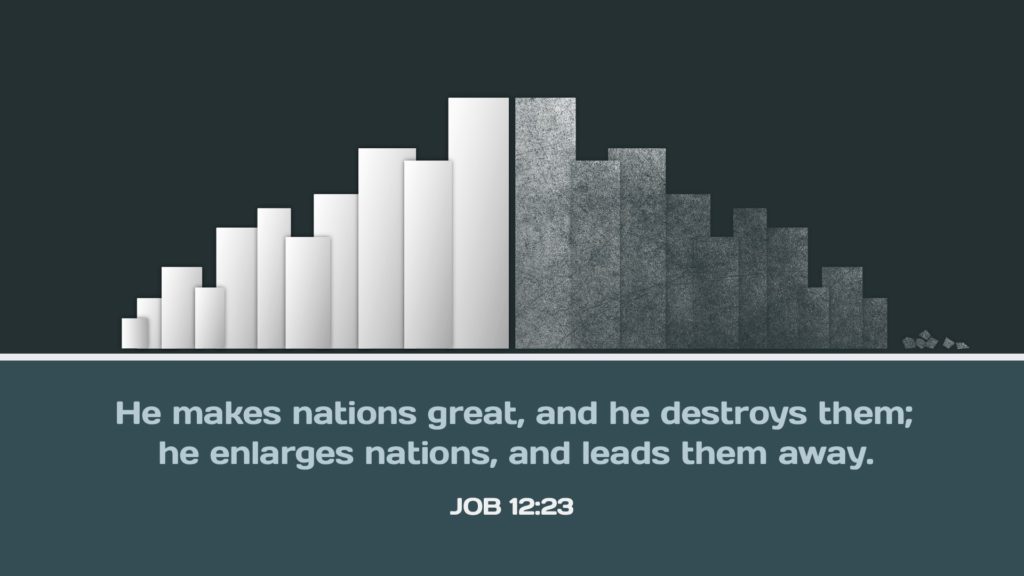Pictures of Divine Judgment: Sodom and Gomorrah (part 2)

| BY SEAN CAVENDER |
Last week we noted how the book of Genesis is a fascinating read. It shows how God interacts with His creation, especially God’s inclination to grieve over sin, judge sinful humanity, but also providing salvation by grace. All of these elements are seen in the flood story in Genesis 6-9. And in the New Testament, Jesus and Peter appeal to similarities between the days of the flood and the coming day of the Lord when God will judge the world and destroy it with fire.
Yet, there’s another story in the book of Genesis that becomes a type and foreshadow of the second coming of Christ and the day God destroys the earth. That is found in Genesis 19 with the destruction of Sodom and Gomorrah.
The Exceedingly Wicked Cities: Sodom and Gomorrah
The narrator of Genesis gives us just a brief introduction to the cities of Sodom and Gomorrah in Genesis 13:13. The men in those cities were “wicked exceedingly and sinners against the LORD.” Sadly, that is where Lot chose to take his family and live. The narrator’s statement about the wickedness in those cities should remind us of the statements in the flood narrative about the utter evil in men’s hearts (Genesis 6:5, 11, 13). One lesson that Genesis repeatedly teaches us is that after sin is in the world, people find a way to make things worse (cf. 2 Timothy 3:13).
The wickedness and unrighteousness in the cities of Sodom and Gomorrah had come to a point to which God was no longer going to ignore. He told Abraham (Lot’s uncle) that He was intent to destroy the city because of the unrighteousness (Genesis 18:17-21). Abraham, fueled by concern for his relatives in the city, wants to know if God would be fair in His judgment. So Abraham asks God if He would punish the righteous on account of the wicked. God agrees that if there were 10 righteous people in the city, then He would spare the city (Genesis 18:32).
Sadly, 10 righteous people could not be found. Genesis 19 opens with a detestable scene that reveals the wickedness of the ruling men in Sodom. God’s messengers only warned Lot and his family about God’s pending destruction on the cities of Sodom and Gomorrah (Genesis 19:12-13). Lot’s sons-in-law did not take him seriously. God’s messengers tell Lot and his family to escape to the mountains and not to look back (Genesis 19:17).
Lot, his wife, and his two daughters left the city of Sodom and arrived safely at the town of Zoar. Yet, Lot’s wife looked back to see the destruction of Sodom and Gomorrah, violating God’s command. Thus, she became a pillar of salt (Genesis 19:23-26).
God’s destruction of these two wicked cities became a symbol of God’s punishment against the wicked. Prior to entering the land of Canaan, Moses warned the nation of Israel that if they were unfaithful to God and turned to serve idols, God would overthrow them just as He did to Sodom and Gomorrah (Deuteronomy 29:23-26). Isaiah warned the people of Israel that they had become as wicked as Sodom and Gomorrah and that they need to repent or prepare for God’s judgment, just as Moses warned (Isaiah 1:9-10; 3:9). Any nation that was wicked and godless and whom God overthrew, it was likened to God’s thorough destruction of Sodom and Gomorrah (Isaiah 13:19). Other prophets in the Old Testament often appealed to the destruction of these cities as a warning to Israel.
Sodom and Gomorrah were destroyed for the exceeding wickedness in their cities. Yet, for anyone who rejects Jesus and His gospel, things will be much worse for them “in the day of judgment” (Matthew 10:15; 11:23-24; Luke 10:12). Jesus reminded people about the rain of fire and brimstone against Sodom and how God destroyed the wicked cities. He warns that anyone who begins to follow Him, but turns away from Him, is like Lot’s wife (Luke 17:29-32).
Remember how Peter appealed to Noah’s salvation in the ark as a type for our salvation in Jesus (1 Peter 3:20-21)? He also taught that the day of the Lord would come and everything would be destroyed, just as God had done in the flood (2 Peter 3:5-12). Peter also shows that God false teachers and those who turn away from God will be destroyed, just as Sodom and Gomorrah were destroyed (2 Peter 2:6). The cities become an example and a warning of how God will handle wickedness. Jude also shows how the cities are an example of eternal punishment in the fires of hell (Jude 7).
Israel repeated the mistakes of Sodom and Gomorrah and plunged the depths of sin to an even greater degree. And if we reject Jesus and His gospel, or if we accept it yet turn away from following Him, it will be even worse for us (2 Peter 2:20)! Just as Sodom and Gomorrah were destroyed with fire and brimstone, eternal conscious punishment in hell will be the fate for anyone who does not faithfully follow and obey the Lord Jesus Christ.
Let us do everything within our power to avoid the fate worst than Sodom and Gomorrah (Matthew 11:24).


